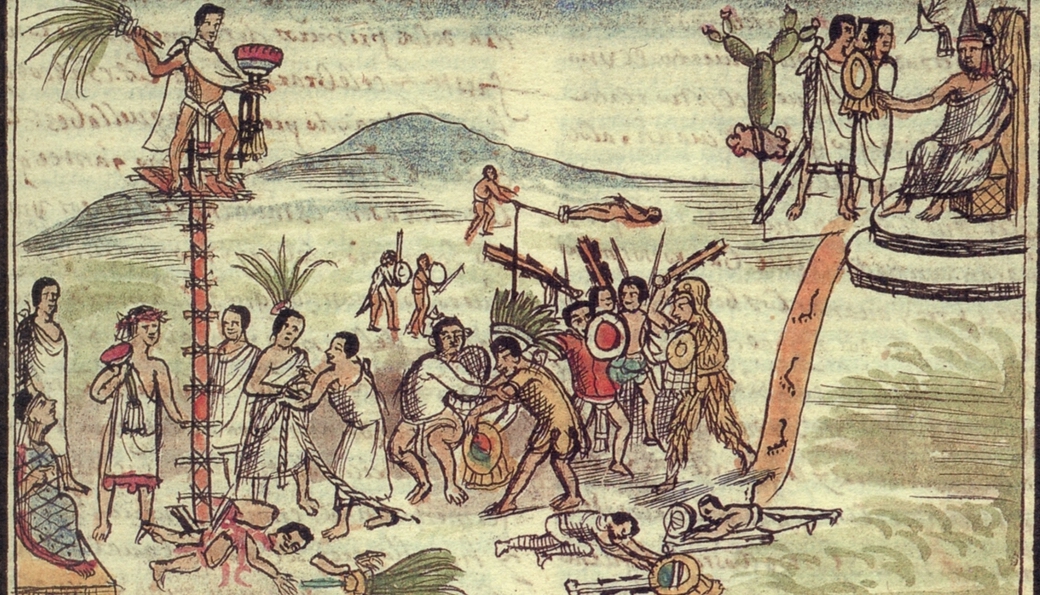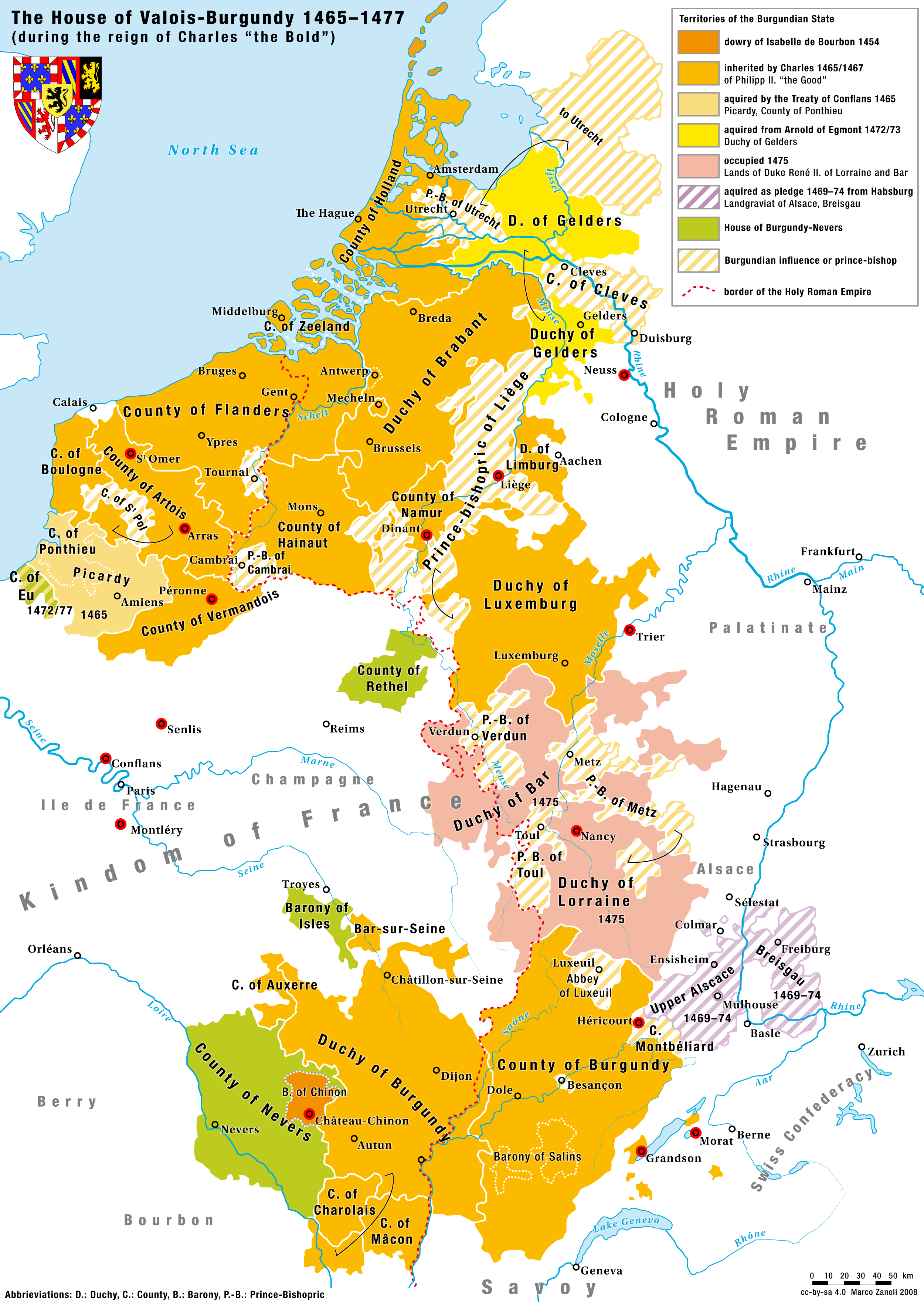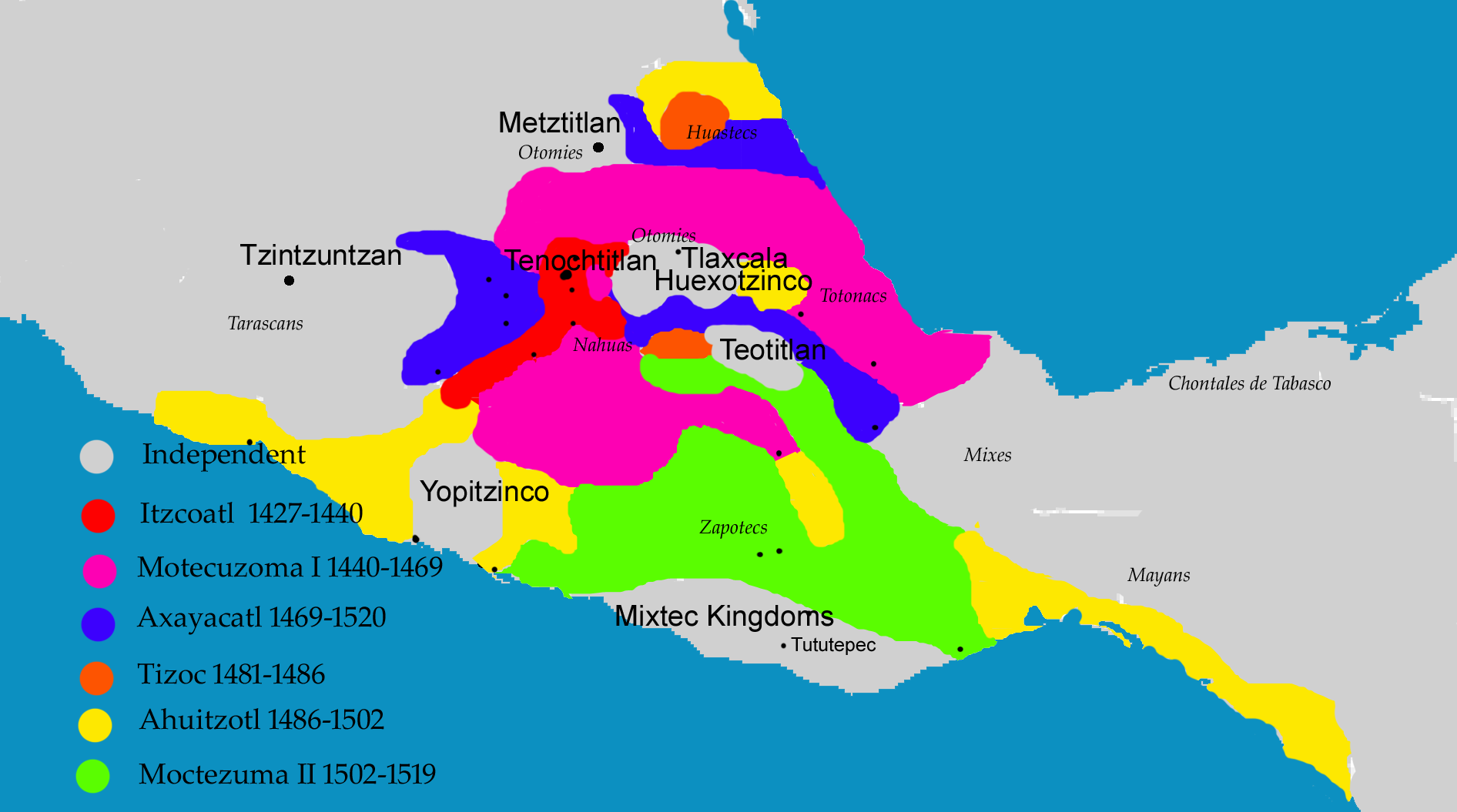|
1469
Year 1469 ( MCDLXIX) was a common year starting on Sunday of the Julian calendar. Events January–December * February 4 – Battle of Qarabagh: Uzun Hasan decisively defeats the Timurids of Abu Sa'id Mirza. * July 24 – Battle of Edgcote: Yorkists are defeated and, in the aftermath, King Edward IV of England is taken prisoner. * August–October – Caister Castle in England is besieged by John de Mowbray, 4th Duke of Norfolk. * October 19 – Ferdinand II of Aragon marries Isabella I of Castile in Valladolid, bringing about a dynastic union. Date unknown * Sigismund of Austria sells Upper-Elsass (Alsace) to Charles the Bold, in exchange for aid in a war against the Swiss. * Moctezuma I, Aztec ruler of Tenochtitlan, dies and is succeeded by Axayacatl. * Anglo-Hanseatic War breaks out. * Marsilio Ficino completes his translation of the collected works of Plato, writes ''Commentary on Plato's Symposium on Love'', and starts to work o ... [...More Info...] [...Related Items...] OR: [Wikipedia] [Google] [Baidu] |
Battle Of Edgcote
The Battle of Edgcote (also known as the Battle of Banbury or the Battle of Danes Moor) took place on 24 July 1469, during the Wars of the Roses. It was fought between a royal army, commanded by the earls of Pembroke and Devon, and a rebel force led by supporters of the Earl of Warwick. The battle took place northeast of Banbury in Oxfordshire; it resulted in a rebel victory which temporarily handed power over to the Earl of Warwick. By September, though, Edward IV of England was back in control, and Warwick found himself in a situation similar to the one before the battle, prompting him to plan a second rebellion. After Edgcote there was no turning back. Edward could no longer trust him fully and he was inexorably moving towards becoming a Lancastrian. Edgcote has a reputation for being one of the least well-documented battles of the period, though numerous contemporary, or near contemporary, records and chronicles refer to it. Details in accounts diverge in terms of number ... [...More Info...] [...Related Items...] OR: [Wikipedia] [Google] [Baidu] |
Timurid Dynasty
The Timurid dynasty, self-designated as Gurkani (), was the ruling dynasty of the Timurid Empire (1370–1507). It was a Sunni Islam, Sunni Muslim dynasty or Barlās clan of Turco-Mongol originB.F. Manz, ''"Tīmūr Lang"'', in Encyclopaedia of Islam, Online Edition, 2006''Encyclopædia Britannica'',Timurid Dynasty, Online Academic Edition, 2007. (Quotation: "Turkic-Mongol" dynasty descended from the conqueror Timur (Tamerlane), renowned for its brilliant revival of artistic and intellectual life in Iran and Central Asia. ... Trading and artistic communities were brought into the capital city of Herat, where a library was founded, and the capital became the centre of a renewed and artistically brilliant Persian culture.") descended from the warlord Timur (also known as Tamerlane). The word "Gurkani" derives from "Gurkan", a Persianized form of the Mongolian word "Kuragan" meaning "son-in-law". This was an honorific title used by the dynasty as the Timurids were in-laws of the line ... [...More Info...] [...Related Items...] OR: [Wikipedia] [Google] [Baidu] |
Abu Sa'id Mirza
Abu Sa'id Mirza ( Chagatay/; 14248 February 1469) was the ruler of the Timurid Empire during the mid-fifteenth century. Born a minor prince of the Timurid dynasty, Abu Sa'id quickly established himself as the most prominent among his warring relations. Over the course of two decades, he reunified much of the Timurid Empire, which had become fractured in the aftermath of the death of his great-uncle Shah Rukh. However, Abu Sa'id's hopes of restoring the empire to its former extent at the time of Timur ultimately failed after he was killed during an invasion of what is now western Iran. He was the paternal grandfather of Babur, who later founded the Mughal Empire of India. Early life and background Abu Sa'id Mirza was born in 1424, the second son of the Timurid prince Muhammad Mirza by his wife Shah Islam. His father was a son of Miran Shah, himself the third son of Timur. His mother was the daughter of Suhrab Kurd and a relative of Izz al-Din Shir of Hakkari, who was a fo ... [...More Info...] [...Related Items...] OR: [Wikipedia] [Google] [Baidu] |
Moctezuma I
Moctezuma I (–1469), also known as Montezuma I, Moteuczomatzin Ilhuicamina ( ) or Huehuemoteuczoma ( ), was the second Tlatoani, Aztec emperor and fifth king of Tenochtitlan. During his reign, the Aztec Empire was consolidated, major expansion was undertaken, and Tenochtitlan started becoming the dominant partner of the Aztec Triple Alliance. Often mistaken for his popular descendant, Moctezuma II, Moctezuma I greatly contributed to the famed Aztec Empire that thrived until Spanish arrival, and he ruled over a period of peace from 1440 to 1453. Moctezuma brought social, economical, and political reform to strengthen Aztec rule, and Tenochtitlan benefited from relations with other cities. Ancestry Moctezuma was the son of emperor Huitzilihuitl (meaning 'Hummingbird Feather') and queen Miahuaxihuitl. He was a brother of Chimalpopoca, Tlacaelel I, and Huehue Zaca. He was the grandson of the first ruler of Tenochtitlan. [...More Info...] [...Related Items...] OR: [Wikipedia] [Google] [Baidu] |
Charles The Bold
Charles Martin (10 November 1433 – 5 January 1477), called the Bold, was the last duke of Burgundy from the House of Valois-Burgundy, ruling from 1467 to 1477. He was the only surviving legitimate son of Philip the Good and his third wife, Isabella of Portugal. As heir and as ruler, Charles vied for power and influence with rivals such as his overlord, King Louis XI of France. In 1465 Charles led a successful revolt of Louis's vassals in the War of the Public Weal. After becoming the Duke of Burgundy in 1467, Charles pursued his ambitions for a kingdom, independent from France, that would stretch contiguously from the North Sea in the north to the borders of Savoy in the south. For this purpose, he acquired Guelders and Upper Alsace; sought the title King of the Romans; and gradually became an enemy of the Germans. Charles married Margaret of York for an English alliance. He arranged the betrothal between his sole child, Mary, with Maximilian of Austria. A passiona ... [...More Info...] [...Related Items...] OR: [Wikipedia] [Google] [Baidu] |
Isabella I Of Castile
Isabella I (; 22 April 1451 – 26 November 1504), also called Isabella the Catholic (Spanish: ''Isabel la Católica''), was Queen of Castile and List of Leonese monarchs, León from 1474 until her death in 1504. She was also Queen of Aragon from 1479 until her death as the wife of King Ferdinand II of Aragon, Ferdinand II. Reigning together over a Dynastic union, dynastically unified Spain, Isabella and Ferdinand are known as the Catholic Monarchs of Spain, Catholic Monarchs. Her reign marked the end of Reconquista and also the start of Spanish Empire and dominance of Spain over European Politics for the next century. After a struggle to claim the throne, Isabella reorganized the governmental system, brought the crime rate down, and unburdened the kingdom of the debt which her half-brother King Henry IV of Castile, Henry IV had left behind. Isabella's marriage to Ferdinand of Aragon in 1469 created the basis of the ''de facto'' unification of Spain. Her reforms and those she ... [...More Info...] [...Related Items...] OR: [Wikipedia] [Google] [Baidu] |
Ferdinand II Of Aragon
Ferdinand II, also known as Ferdinand I, Ferdinand III, and Ferdinand V (10 March 1452 – 23 January 1516), called Ferdinand the Catholic, was King of Aragon from 1479 until his death in 1516. As the husband and co-ruler of Queen Isabella I of Castile, he was also King of Castile from 1475 to 1504 (as Ferdinand V). He reigned jointly with Isabella over a Dynastic union, dynastically unified Spain; together they are known as the Catholic Monarchs. Ferdinand is considered the ''de facto'' first king of Spain, and was described as such during his reign, even though, legally, Crown of Castile, Castile and Crown of Aragon, Aragon remained two separate kingdoms until they were formally united by the Nueva Planta decrees issued between 1707 and 1716. The Crown of Aragon that Ferdinand inherited in 1479 included the kingdoms of Kingdom of Aragon, Aragon, Kingdom of Valencia, Valencia, Kingdom of Majorca, Majorca, Kingdom of Sardinia, Sardinia, and Kingdom of Sicily, Sicily, as well as ... [...More Info...] [...Related Items...] OR: [Wikipedia] [Google] [Baidu] |
Battle Of Qarabagh
The Battle of Qarabagh was fought on February 4, 1469, between Aq Qoyunlu under Uzun Hasan, and the Timurids of Samarkand under Abu Sa'id Mirza, resulting in the latter's defeat, imprisonment and execution. After the battle, the Timurids forever lost any hopes of gaining Iraq or Iran back into their kingdom. Background Conflict between Kara Koyunlu (Black Sheep Turkomen) under the leadership of Jahan Shah and Aq Qoyunlu (White Sheep Turkomen) under the leadership of Uzun Hasan had taken a decisive turn in the 15th century. During Jahan Shah's reign the Kara Koyunlu's territory reached its largest extent, including huge swaths of land in Anatolia, most of present-day Iraq, central Iran, and even eventually Kerman. He and his predecessors before him were vassals of the Timurids of Samarkand. However, by mid 15th century, Jahan Shah, recognising the weakness of Timurid authority in Khurasan, invaded it in Summer of 1458. Timurid ruler of Samarkand, Abu Sa'id Mirza could not tolera ... [...More Info...] [...Related Items...] OR: [Wikipedia] [Google] [Baidu] |
History Of Spain
The history of Spain dates to contact between the List of the Pre-Roman peoples of the Iberian Peninsula, pre-Roman peoples of the Mediterranean Sea, Mediterranean coast of the Iberian Peninsula with the Greeks and Phoenicians. During Classical Antiquity, the peninsula was the site of multiple successive colonizations of Greeks, Punic people, Carthaginians, and Romans. Native peoples of the peninsula, such as the Tartessos, intermingled with the colonizers to create a uniquely Iberian culture. The Romans referred to the entire peninsula as Hispania, from which the name "Spain" originates. As was the rest of the Western Roman Empire, Spain was subject to numerous invasions of Germanic tribes during the 4th and 5th centuries AD, resulting in the end of Roman rule and the establishment of Germanic kingdoms, marking the beginning of the Spain in the Middle Ages, Middle Ages in Spain. Germanic control lasted until the Umayyad conquest of Hispania began in 711. The region became known a ... [...More Info...] [...Related Items...] OR: [Wikipedia] [Google] [Baidu] |
Aztec
The Aztecs ( ) were a Mesoamerican civilization that flourished in central Mexico in the Post-Classic stage, post-classic period from 1300 to 1521. The Aztec people included different Indigenous peoples of Mexico, ethnic groups of central Mexico, particularly those groups who spoke the Nahuatl, Nahuatl language and who dominated large parts of Mesoamerica from the 14th to the 16th centuries. Aztec culture was organized into city-states (''altepetl''), some of which joined to form alliances, political confederations, or empires. The Aztec Empire was a confederation of three city-states established in 1427: Tenochtitlan, the capital city of the Mexica or Tenochca, Tetzcoco (altepetl), Tetzcoco, and Tlacopan, previously part of the Tepanec empire, whose dominant power was Azcapotzalco (altepetl), Azcapotzalco. Although the term Aztecs is often narrowly restricted to the Mexica of Tenochtitlan, it is also broadly used to refer to Nahuas, Nahua polities or peoples of central Pre ... [...More Info...] [...Related Items...] OR: [Wikipedia] [Google] [Baidu] |
Axayacatl
Axayacatl (; ; ; meaning "face of water"; –1481) was the sixth of the of Tenochtitlan and Emperor of the Aztec Triple Alliance. Biography Early life and background Axayacatl was a son of the princess Atotoztli II and her cousin, prince Tezozomoc (son of Itzcoatl), Tezozomoc. He was a grandson of the Emperors Moctezuma I and Itzcoatl. He was a descendant of the king Cuauhtototzin. He was a successor of Moctezuma and his brothers were Emperors Tizoc and Ahuitzotl and his sister was the Queen Chalchiuhnenetzin. He was an uncle of the Emperor Cuauhtémoc and father of Emperors Moctezuma II and Cuitláhuac. Rise to power During his youth, his military prowess gained him the favor influential figures such as Nezahualcoyotl (tlatoani), Nezahualcoyotl and Tlacaelel I, and thus, upon the death of Moctezuma I in 1469, he was chosen to ascend to the throne, much to the displeasure of his two older brothers, Tizoc and Ahuitzotl. It is also important that the Aztec calendar stone, ... [...More Info...] [...Related Items...] OR: [Wikipedia] [Google] [Baidu] |
Edward IV Of England
Edward IV (28 April 1442 – 9 April 1483) was King of England from 4 March 1461 to 3 October 1470, then again from 11 April 1471 until his death in 1483. He was a central figure in the Wars of the Roses, a series of civil wars in England fought between the Yorkist and Lancastrian factions between 1455 and 1487. Edward inherited the Yorkist claim to the throne at the age of eighteen when his father, Richard, Duke of York, was killed at the Battle of Wakefield in December 1460. After defeating Lancastrian armies at Mortimer's Cross and Towton in early 1461, he deposed King Henry VI and took the throne. His marriage to Elizabeth Woodville in 1464 led to conflict with his chief advisor, Richard Neville, Earl of Warwick, known as the "Kingmaker". In 1470, a revolt led by Warwick and Edward's brother George, Duke of Clarence, briefly re-installed Henry VI. Edward fled to Flanders, where he gathered support and invaded England in March 1471; after victories at the ba ... [...More Info...] [...Related Items...] OR: [Wikipedia] [Google] [Baidu] |







